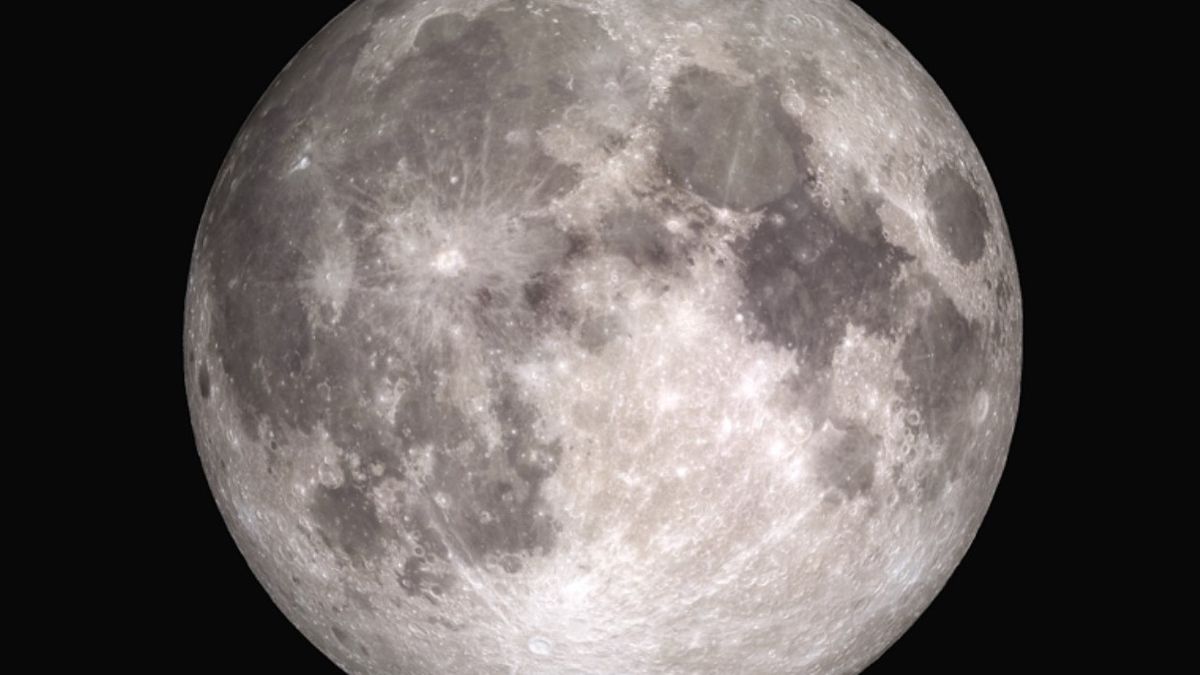JAKARTA In research into samples taken from the surface of the Moon, scientists managed to find a new type of mineral. They are also studying the latest samples to study fuel for nuclear fusion power plants, reported by Sputnik News.
On Friday, in Beijing, China's National Space Administration (CNSA) and the Chinese Atomic Energy Authority jointly announced findings of the Change-(Y), the sixth unique mineral identified on the lunar surface and was first discovered by Chinese scientists, according to China Daily.
While other minerals were discovered by the US or Russia, the only other country that returned samples from the Moon. The discovery was made by scientists at Beijing's Institute of Geological Research, a subsidiary of China National Nuclear Corporation (CNNC).
The Change-(Y) particles, phosphate material, are only 10 microns in diameter, or about a tenth of the width of a human hair, according to Wang Xuejun, a party official on CNNC.
China's Chang'e-5 lunar rover sent samples back in December 2020, taken from a place north of Mons Rümker in Oceanus Procellarum, in the northwestern corner of the moon that always faces Earth. The samples are the first samples to return in 44 years.
Photo taken on December 4, 2020 shows HL-2M Tokamak, China's new generation of sunlight, in Chengdu, Sichuan Province, southwest China. HL-2M Tokamak began operating on Friday and achieved its first plasma release, according to China National Nuclear Corporation (CNNC).
CNSA distributes samples to researchers for analysis starting July 2021, with samples weighing 17.5 grams to 13 domestic research organizations working on 31 scientific projects.
Dong Baot, deputy chairman of the Chinese Atomic Energy Authority, said at a recent mineralogi conference that the discovery "provided more basic scientific data for the evaluation and development of lunar resources and had deepened human knowledge of the moon and solar system."
"Chinese has also become the third country to take lunar samples and find new moon minerals after the US and Russia," he said, according to the South China Morning Post.
The researchers also found samples of glucose-3, a silicon isotope smaller than normal that has long been eyed as a potential fuel for nuclear fusion, a type of power plant that releases far more energy than fissive-based nuclear power plants, but with no problems related to radioactive matter.
The moon has a large number of caps, thanks to solar wind exposure, which is prevented by Earth's magnetic field from interacting with the planet's surface. Other places, such as the planet Juipter, even have a higher number of waivers-3. According to the European Space Agency (ESA), gas mining is likely to be the main driving force behind future space exploration, especially by private companies.
China has become a major research hub for fusion power, with technology seen as the key to solving the global energy crisis and creating a realistic way to free the global community from fossil fuels polluting the environment, where mining and arson contribute greatly to global warming.
The English, Chinese, Japanese, Arabic, and French versions are automatically generated by the AI. So there may still be inaccuracies in translating, please always see Indonesian as our main language. (system supported by DigitalSiber.id)













